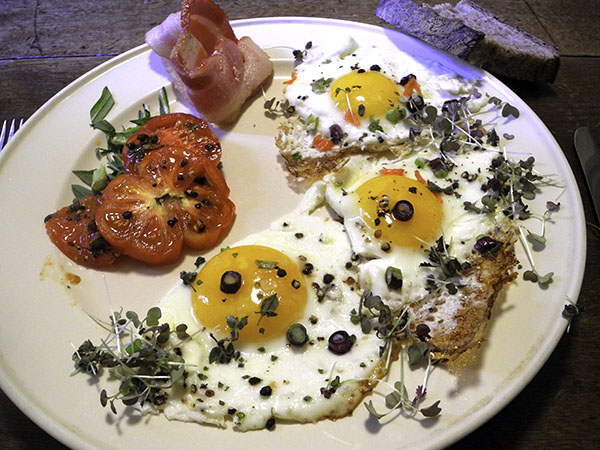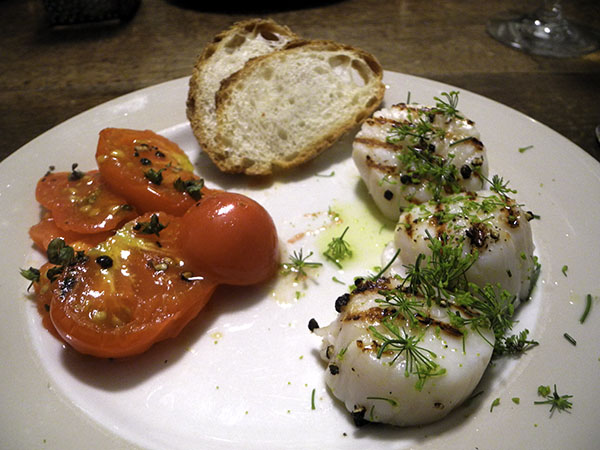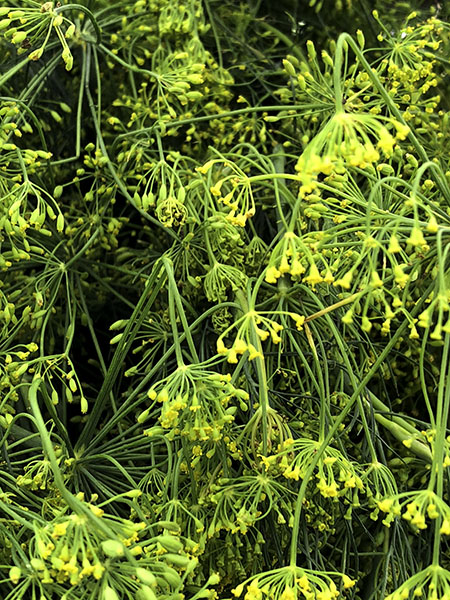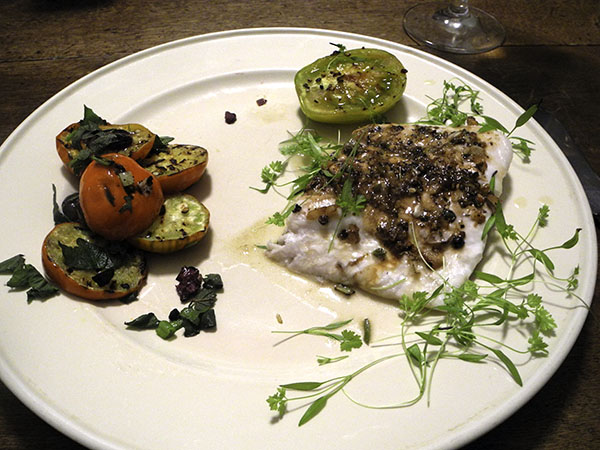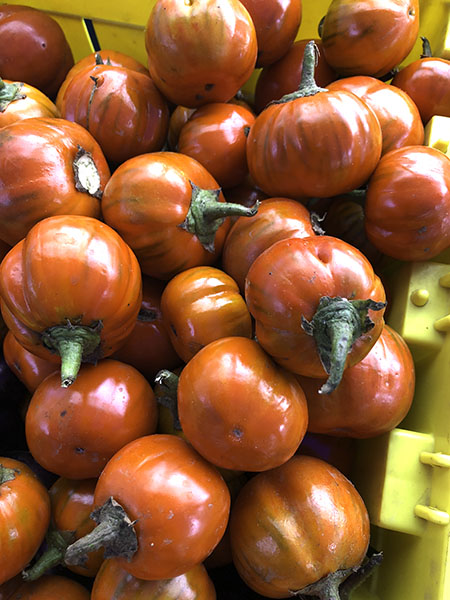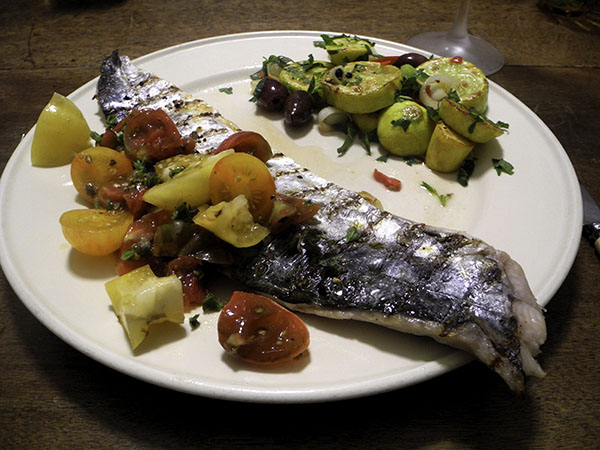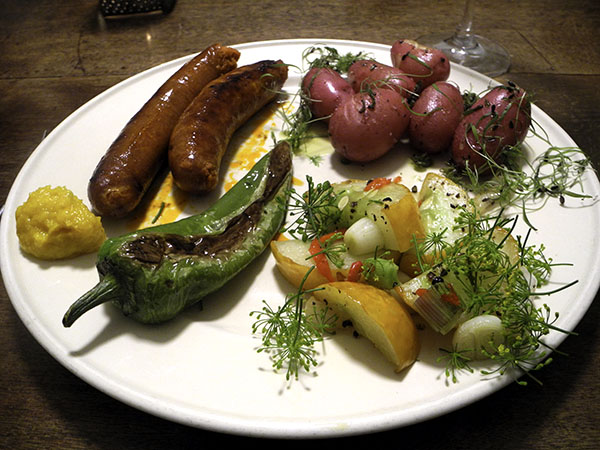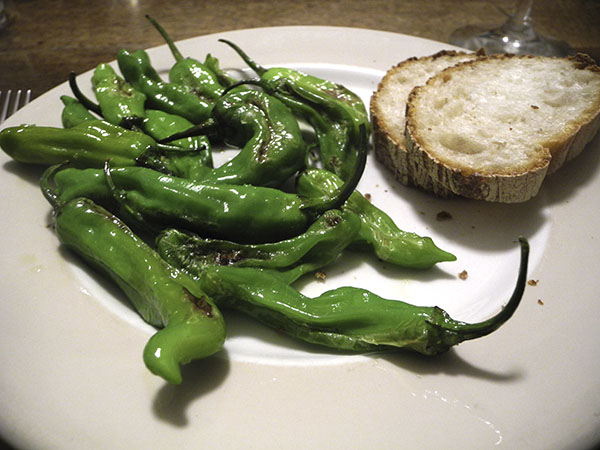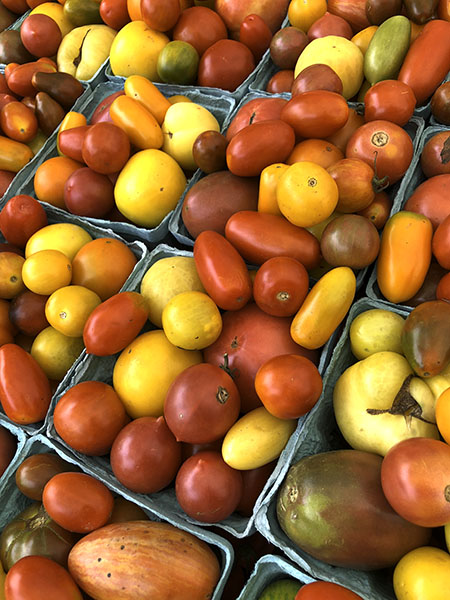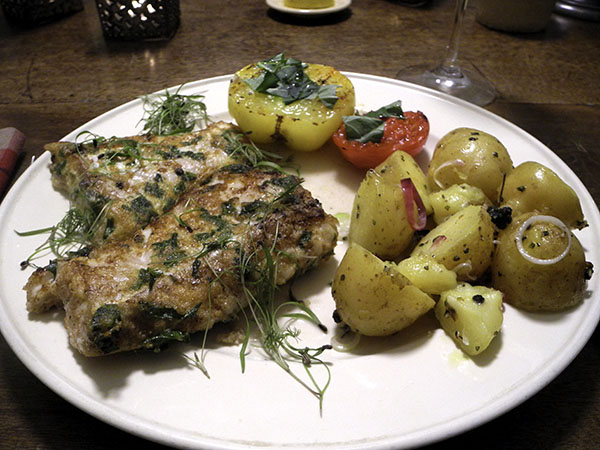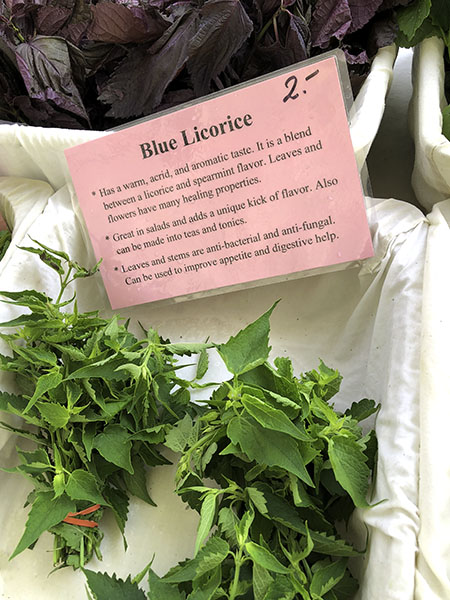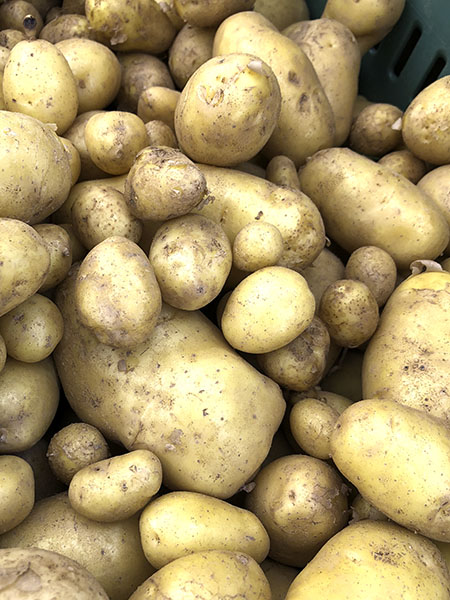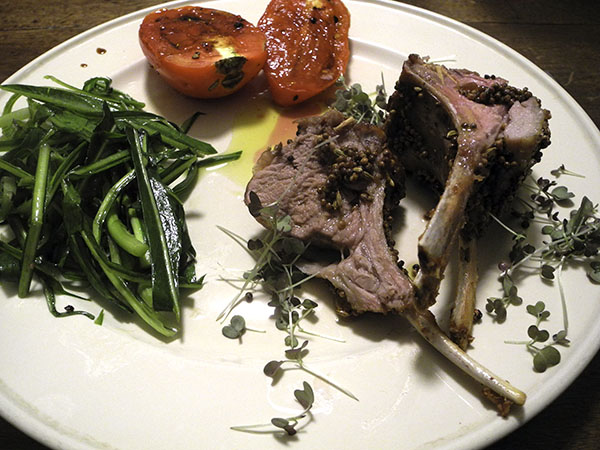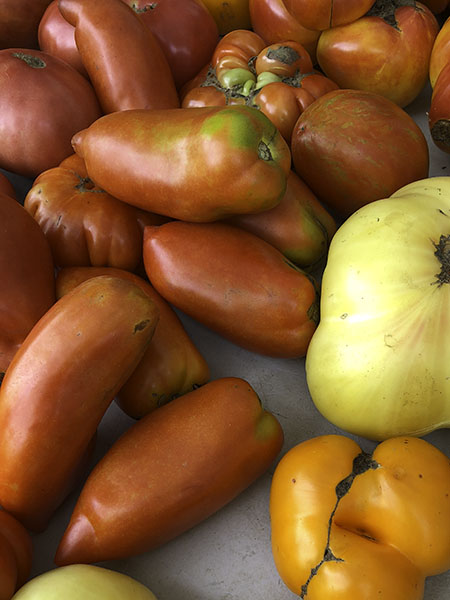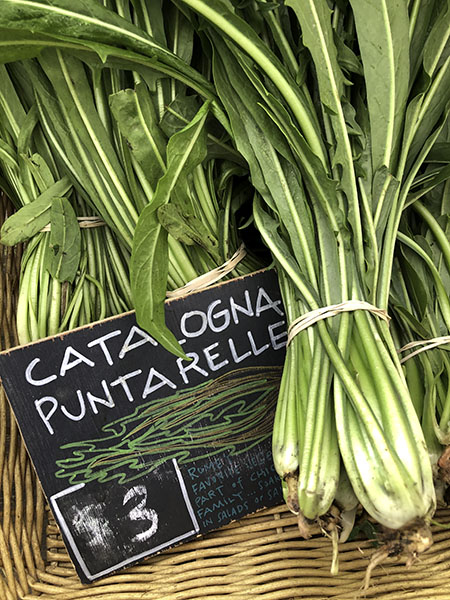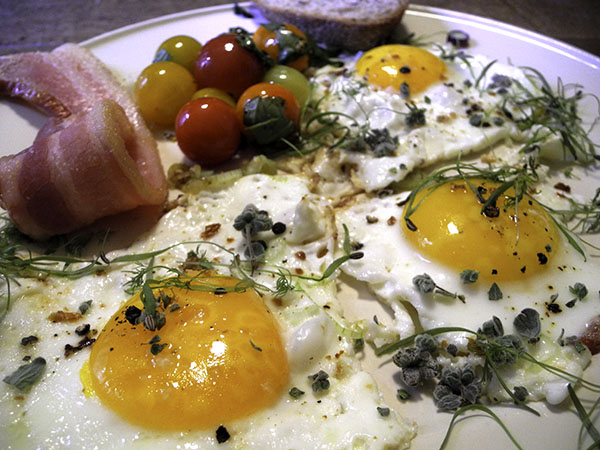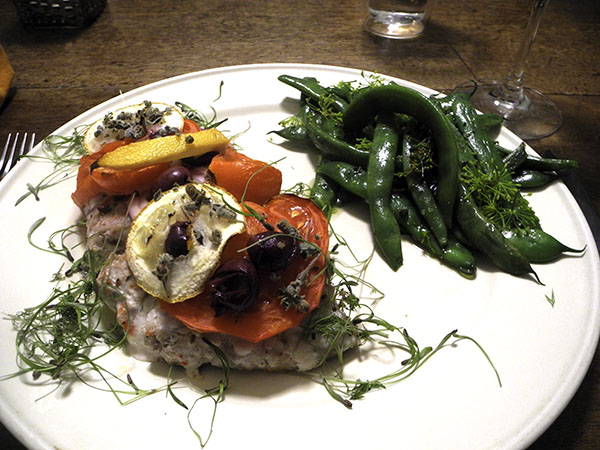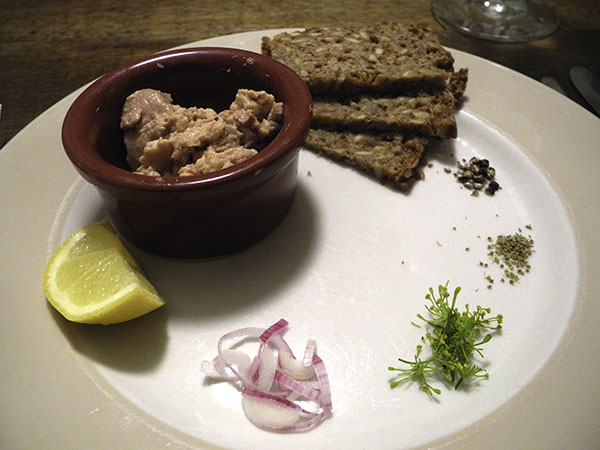
The cod liver tasted a bit like foie gras, but without the guilt, which is to say, it was delicious.
- four ounces of Icelandic canned cod liver (Skansen) from the Schaller & Weber store, served with little more than pinches of a few condiments (freshly-ground black pepper, Sicilian wild fennel pollen from Buon Italia, fresh dill buds from Alewife Farm, sliced red scallion from Berried Treasures Farm, and slices of an organic Whole Foods Market lemon)
- slices of a Fruit & Seed Brød from Bread Alone (perhaps a mørkt rug frugt brød?)

The main course featured wild shrimp, which I believe has never shown up on this blog before. When I have cooked this delectable crustacean, it’s always been the excellent farmed shrimp that Jean Claude Frajmund raises up the Hudson, in Newburgh, New York. Eco Shrimp Garden now appears in the Union Square Greenmarket on Saturdays only, and that’s the day I normally do not appear there (mostly because of the weekend crowds of gawkers, and because we are inclined to do other stuff that afternoon.
But I do usually pay a brief visit to the Chelsea Down to Earth Farmers Market on 23rd Street, the little market which is set up less than a block from us every Saturday. This time the market’s regular seafood vender had ‘super jumbo’ shrimp that one of their boats had netted, beheaded, and quickly frozen while fishing in North Carolina waters that week.
They were almost local, or at least more local than the Gulf, and way more local than southeast Asia.
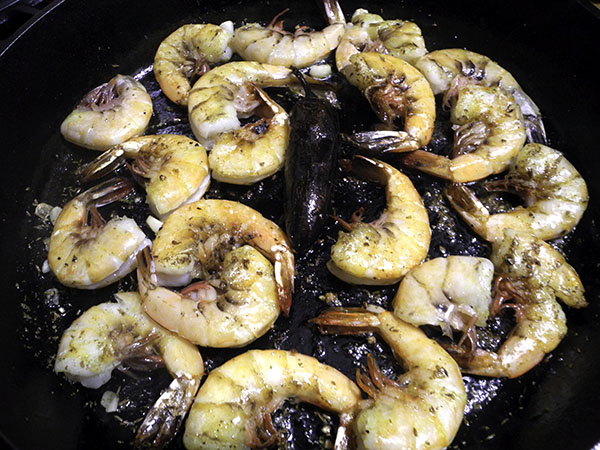
The image of the shrimp sautéing mimics that of the cucumbers I had started a few minutes earlier.
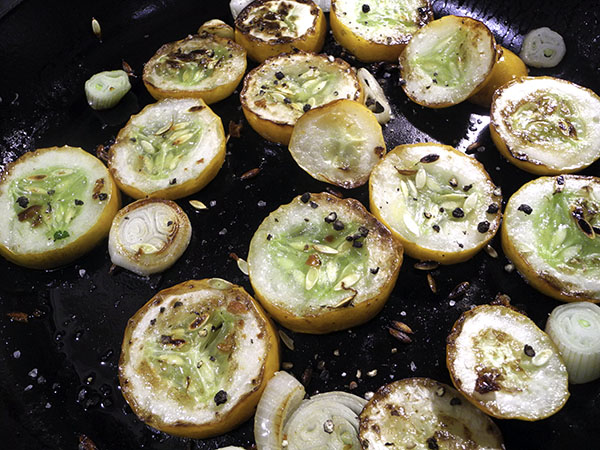
- one teaspoon of chopped, still slightly immature Rocambole garlic from Keith’s Farm heated inside a very heavy 13 1/2″ cast iron pan over a very low flame until the garlic had colored nicely, followed by a pinch of Spanish saffron, one dried chipotle pepper from Northshire Farms in the Union Square Greenmarket, one crushed section of a dried orange-gold habanada pepper, and a teaspoon of freshly-ground dried cumin seed from Eataly, all of it stirred together for a minute or two before 20 ‘extra jumbo’ North Carolina shrimp were placed inside the pan (I had cut through the length of their backs, from head to tail, for ease of shelling after they were cooked and on the plates), the shrimp seasoned with salt and pepper and the heat brought up a bit, the shrimp cooked until firm while being turned twice, served on the plates with a generous squeeze of lemon, garnished with chopped parsley from Keith’s Farm
- five tiny halved green tomatoes from Campo Rosso Farm, sautéed in a little olive oil inside a small vintage Corning Pyrex Flameware blue-glass pan, seasoned with Maldon salt and freshly-ground black pepper, garnished with fresh dill buds from Alewife Farm

- two ‘Sikkim cucumbers’, which, to me, actually look more like Hmong Red, weighing one pound, from Norwich Meadows Farm, unpeeled, sliced into rounds 2 cm thick, sautéed in a little olive oil inside a large enameled cast iron pan over a medium-high flame, turning twice, sprinkling with salt each time, each side allowed to begin carbonizing, adding slices from the stem of a fresh bulbous shallot from Tamarack Hollow Farm more than half way through, seasoned with freshly-ground black pepper, arranged on the plates, garnished with micro red basil from Two Guys from Woodbridge, and drizzled with a little olive oil
- the wine was a California (Lodi) white, F. Stephen Millier Angels Reserve White Blend Lodi 2016, from Naked Wines
- the music was from 2 albums, Dylan Mattingly’s ‘Stream of Stars’, and the International Contemporary Ensemble & George Lewis’ ‘The Will To Adorn’
